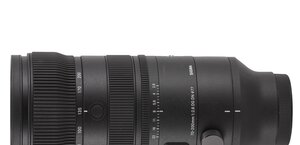Olympus M.Zuiko Digital 300 mm f/4.0 ED IS PRO
3. Build quality and image stabilization
If you think that mirrorless systems devices should be by default compact you might be a bid disappointed. Still it’s enough to understand some basic laws of optics and it becomes obvious you get nothing for nothing. Fast telephoto lenses, no matter to what body you attach them, have to be substantial and heavy. If you want to enjoy a decent aperture size combined with such a big focal length the front element system of the lens must be significantly large and weigh a lot.
In the photo below the Olympus 4/300 is positioned next to another PRO series lens so the 40-150 mm f/2.8 model.
Please Support UsIf you enjoy our reviews and articles, and you want us to continue our work please, support our website by donating through PayPal. The funds are going to be used for paying our editorial team, renting servers, and equipping our testing studio; only that way we will be able to continue providing you interesting content for free. |
- - - - - - - - - - - - - - - - - - - - - - - - - - - - - - - - - - - - - - - - - - - - - - - -
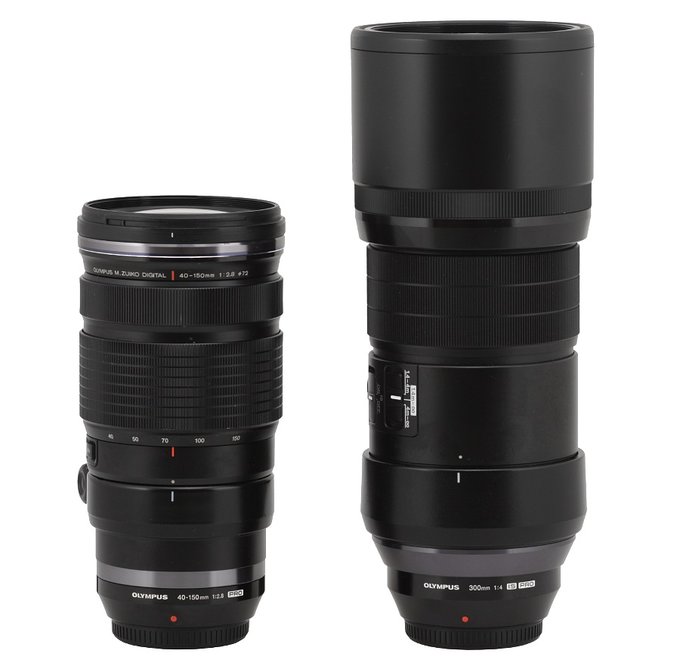 |
The tested lens starts with a metal mount which surrounds a contact plate embedded into a black, metal ring; that ring features an inscription “MADE IN CHINA” (sic!). A rear element is immobile and it comes with a diameter of about 25 mm. It is surrounded by a black tube sensibly matted and it hides inside the whole construction about 2 mm deep.
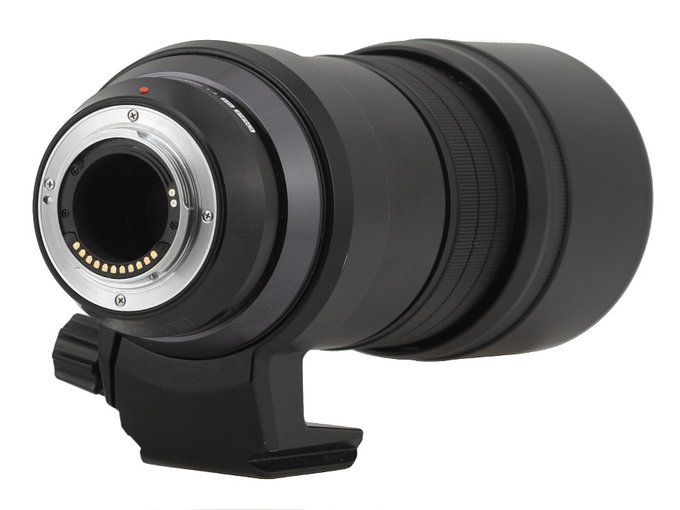 |
The proper lens casing, made of metal, begins with a ring which doesn’t move and turns wider after a while. It features the name, parameters, the serial number of the lens and a red dot making an alignment with a camera easier. A “SPLASH PROOF” inscription on that ring informs you that the Olympus instrument is extra well-sealed against dust and splashwater. There is also information concerning the focusing distance range (1.4m/4.6ft–∞).
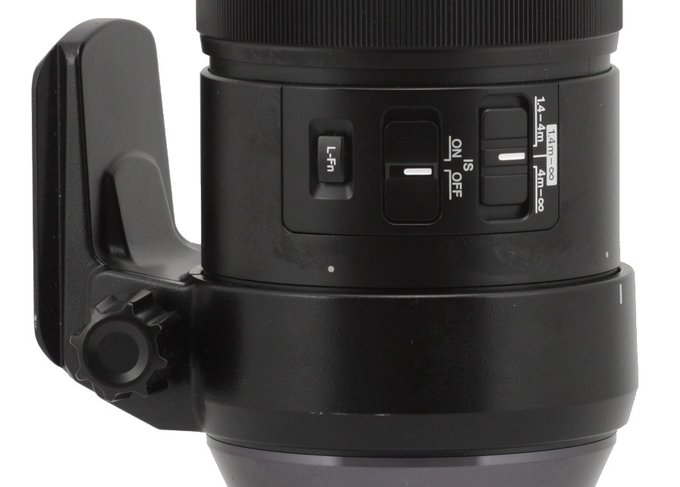 |
The next part of the lens consist of a smooth ring which gets larger after a while and finally turns into that part of the casing to which you can attach a very solid and removable tripod collar. Further on you see a smooth, relatively long tube; on its right there is an autofocus range slide switch (1.4–4 m, 1.4–∞ and 4m–∞), a stabilization switch (IS ON/OFF) an a programmable L-Fn function button with an access to 27 different options.
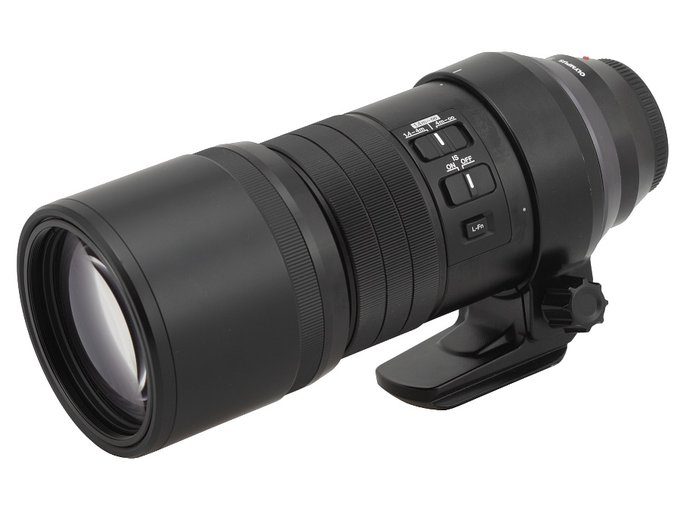 |
Then you see a manual focus ring, as wide as 40 mm, with metal ribs covering most of its surface. It features a manual focus clutch system - its work in the standard position is based on servomechanisms but if you pull it toward the mount it passes into a mechanical mode providing a linear focus response and revealing a distance scale expressed in feet and meters. Running through the whole distance range in the mechanical mode needs a turn through an angle of about 120 degrees. In the fly-by-wire mode that angle becomes significantly wider but it depends on the speed of the turn.
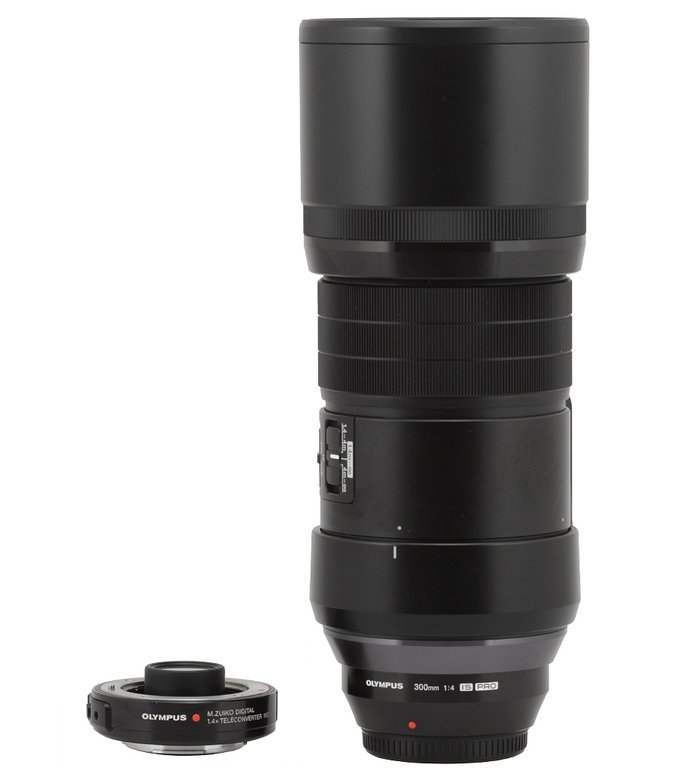 |
Further on you see a metal part of the casing which doesn’t move and is composed of several rings featuring an inscription stating the name and parameters of the lens. That part of the lens is covered by a retractable lens hood made of plastic.
The front element of the lens is 74 mm in diameter, surrounded by a non-rotating filter thread, 77 mm in diameter.
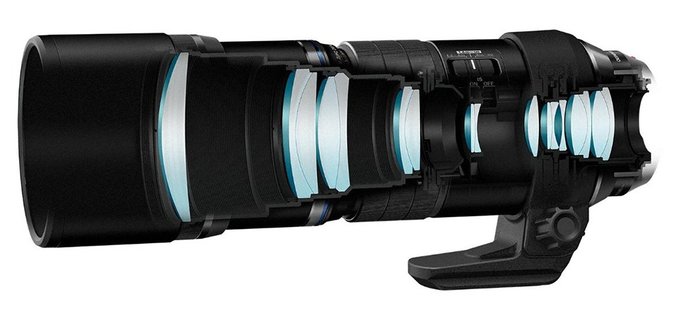 |
When it comes to the optical design you deal here with 17 elements positioned in 10 groups. That design includes three Super ED (Super Extra-Low Dispersion), three HR (High-Refractive index) and one E-HR (Extra-High Refractive index) elements. Inside you can also find a round aperture with nine diaphragm blades which can be closed down to a value of f/22. That value doesn’t change after attaching a tele-converter to the lens.
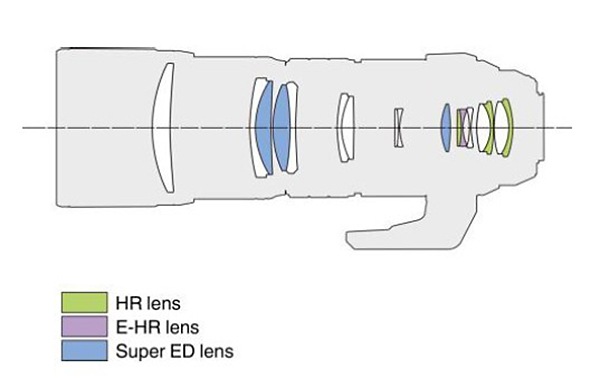 |
Buyers get both caps, a removable and very solid tripod adapter, a retractable lens hood permanently attached to the lens and a soft pouch in the box.
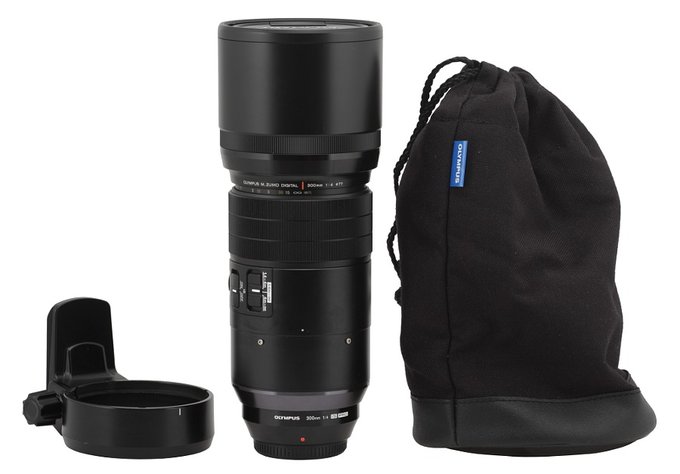 |
Optical stabilization
The test of the optical stabilization unit of the Olympus 4/300 IS was conducted with the lens attached to the Olympus O-MD E-M10. In order to check the Olympus’s performance we took between 20 and 60 photos with the exposure times ranging from 1/640 to 1/4 of a second and the stabilization switched on and off. After that we calculated a percentage of blurred photos for each exposure time. The graph below presents that percentage as a part of the function of the exposure time expressed in EV (where 0 EV corresponds to an exposure time of 1/500 of a second).
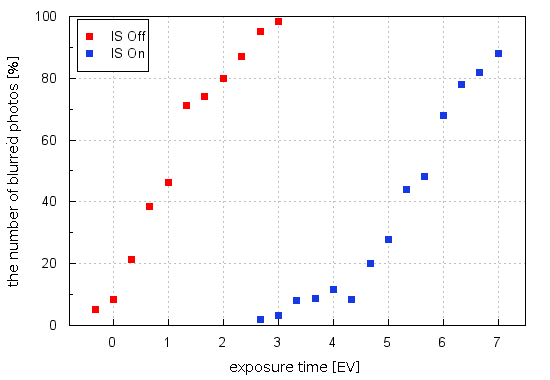
The maximum distance between these two curves is the measurement of the stabilization efficiency and here it reaches 4.5-4.7 EV – a truly sensational value, one of the best we’ve ever managed to get in our tests. It’s enough to say that, at the equivalent of the 600 mm focal range, you are able to take a brisk, clear photo without any problems with the exposure time of about 1/15 of a second. Impressive!
What’s more, Olympus declares that its new lens’s stabilization can integrate with the 5-axis Sync IS matrix system of the OM-D E-M1 and the E-M Mark II cameras, ensuring even better efficiency, as high as 6 EV steps. Unfortunately, as we don’t have those bodies in our office, we couldn’t check that claim.




